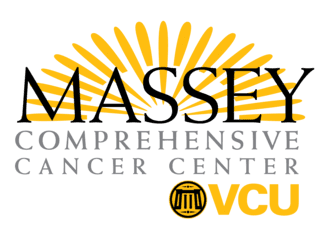HBOC syndrome is characterized by the following features in a family:
- An early age of onset breast cancer (often before age 50)
- Family history of both breast and ovarian cancer
- Increased chance of bilateral cancers (cancer that develop in both breasts, or both ovaries, independently) or an individual with both breast and ovarian cancer
- An autosomal dominant pattern of inheritance (vertical transmission through either the mother or father’s side of the family)
- An increased incidence of tumors of other specific organs, such as the prostate
Other factors that increase the chance that a family has HBOC syndrome include:
- Family history of male breast cancer
- Ashkenazi Jewish ancestry
BRCA1 and BRCA2 genes
In 1990, DNA linkage studies on large families with the above characteristics identified the first gene associated with breast cancer. Scientists named this gene “breast cancer 1” or BRCA1 (pronounced brak-uh). BRCA1 is located on chromosome #17. Mutations in the gene are transmitted in an autosomal dominant pattern in a family.
Since it was clear that not all breast cancer families were linked to BRCA1, studies continued and in 1994, scientists discovered another gene (similar to BRCA1), and named it BRCA2. BRCA2 is located on chromosome #13. Mutations in this gene also are transmitted in an autosomal dominant pattern in a family.
Both BRCA1 and BRCA2 are tumor suppressor genes that usually have the job of controlling cell growth and cell death. Everyone has two BRCA1 (one on each chromosome #17) and two BRCA2 genes (one on each chromosome #13). When a person has one altered or mutated copy of either the BRCA1 or BRCA2 gene, their risk for various types of cancer increases:
| BRCA1 mutation |
|
| BRCA2 mutation |
|
Both copies of a tumor suppressor gene must be altered or mutated before a person will develop cancer. In HBOC, the first mutation is inherited from either the mother or father and is therefore present in all cells of the body. This situaton is called a germline mutation. Whether a person who has a germline mutation will develop cancer and where the cancer(s) will develop depends upon where (which cell type) the second mutation occurs. For example, if the second mutation is in the ovary, then ovarian cancer may develop. If it is in the breast, breast cancer may develop. The process of tumor development actually requires mutations in multiple growth control genes. Loss of both copies of BRCA1 or BRCA2 is just the first step in the process. What causes these additional mutations to be acquired is unknown. Possible causes include chemical, physical or biological environmental exposures, or chance errors in cell replication.
Some individuals who have inherited a germline BRCA1 or BRCA2 mutation never develop cancer because they never get the second mutation necessary to knock out the function of the gene and start the process of tumor formation, which can make the cancer appear to skip generations in a family, when, in reality, the mutation is present. Persons with a mutation, regardless of whether they develop cancer, however, have a 50/50 chance to pass the mutation on to the next generation.
It also is important to remember that the BRCA1 and BRCA2 genes are not located on the sex chromosomes. Therefore, mutations can be inherited from the mother or the father’s side of the family.
“Founder’s effect”
One final point that needs to be understood about BRCA1 and BRCA2 is a concept known as the “founder’s effect.” The majority of people who have a BRCA1 or BRCA2 mutation have a unique mutation — one that is specific to them and their family. To date, hundreds of unique mutations have been identified in both BRCA1 and BRCA2. However, there are a few exceptions. For instance, specific recurring mutations have been found in individuals of Ashkenazi Jewish descent, and persons from the Netherlands, Iceland and Sweden. Mutations recur in these groups because of a founder’s effect. “Founders” are a small group of people who, due to geographic or religious isolation, interbred. When a small group of people interbreeds over generations, specific rare mutations can recur and become more common in the population, which is called a founder’s effect.
The present day Ashkenazi Jewish population arose from a small group of founders, of whom one or more must have carried specific mutations in the BRCA1 and BRCA2 genes. In particular, there are three mutations (two in BRCA1 and one in BRCA2) that account for the majority of the BRCA mutations seen in persons of Ashkenazi Jewish ancestry. This information has practical meaning when it comes to genetic testing because some laboratories now offer “ethnic-specific” mutation panels. Rather than searching through the entire gene every time a person is tested, in some cases, laboratories can instead first look for specific mutations based on a person’s ethnic background. The founder effect also is important in Ashkenazi Jewish individuals because it has led to an increased occurrence of BRCA mutations in this population. In the general population, it is estimated that one in 800 individuals has a mutation in BRCA1 or BRCA2. In contrast, one in 40 Ashkenazi individuals has one of the recurring mutations. This increased occurrence has implications in terms of assessing the significance of a family history of breast and ovarian cancer in Ashkenazi versus non-Ashkenazi persons.
To make an appointment with a genetic counselor to discuss your cancer risk, contact VCU Massey Comprehensive Cancer Center's Familial Cancer Clinic at (804) 828-7999.
